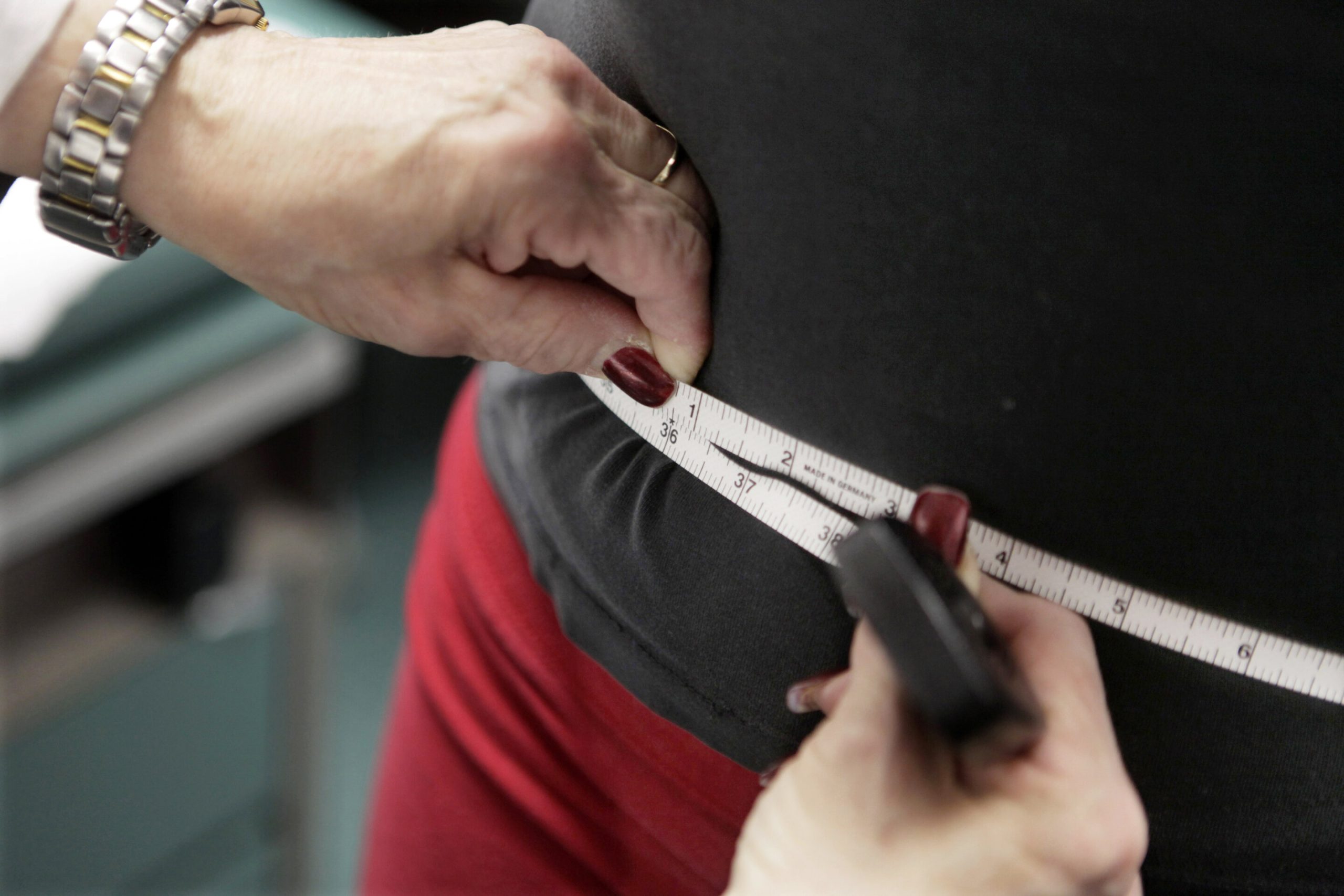
Obesity is high and holding steady in the U.S., but the proportion of those with severe obesity—especially women—has climbed since a decade ago, according to new government research.
The U.S. obesity rate is about 40%, according to a 2021-2023 survey of about 6,000 people. Nearly 1 in 10 of those surveyed reported severe obesity, the U.S. Centers for Disease Control and Prevention found. Women were nearly twice as likely as men to report severe obesity.
The overall obesity rate appeared to tick down vs. the 2017-2020 survey, but the change wasn’t considered statistically significant; the numbers are small enough that there’s mathematical chance they didn’t truly decline.
That means it’s too soon to know whether new treatments for obesity, including blockbuster weight-loss drugs such as Wegovy and Zepbound, can help ease the epidemic of the chronic disease linked to a host of health problems, according to Dr. Samuel Emmerich, the CDC public health officer who led the latest study.
“We simply can’t see down to that detailed level to prescription medication use and compare that to changes in obesity prevalence,” Emmerich said. “Hopefully that is something we can see in the future.”
Most telling though, the results that show that the overall obesity rate in the U.S. has not changed significantly in a decade, even as the rate of severe obesity climbed from nearly 8% in the 2013-2014 survey to nearly 10% in the most recent one. Before that, obesity had increased rapidly in the U.S. since the 1990s, federal surveys showed.
Measures of obesity and severe obesity are determined according to body mass index, a calculation based on height and weight. People with a BMI of 30 are considered to have obesity; those with a BMI of 40 or higher have severe obesity. BMI is regarded as a flawed tool but remains widely used by doctors to screen for obesity.
“Seeing increases in severe obesity is even more alarming because that’s the level of obesity that’s most highly associated with some of the highest levels of cardiovascular disease and diabetes and lower quality of life,” said Solveig Cunningham, an Emory University global health professor who specializes in obesity.
Cunningham, who was not involved in the new study, said it’s not clear why rates of severe obesity are going up, or why they were higher among women. Factors could include the effects of hormones, the impact of childbearing or other causes that require further study, she said.
The new study also found that obesity rates varied by education. Almost 32% of people with a bachelor’s degree or higher reported having obesity, compared with about 45% of those with some college or a high school diploma or less.
The new report follows the release earlier this month of data from U.S. states and territories that showed that in 2023, the rate of obesity ranged widely by place, from a high of more than 41% of adults in West Virginia to a low of less than 24% of adults in Washington, D.C. Rates were highest in the Midwest and the South.
All U.S. states and territories posted obesity rates higher than 20%. In 23 states, more than 1 in 3 adults had obesity, the data showed. Before 2013, no state had a rate that high, said Dr. Alyson Goodman, who leads a CDC team focused on population health.
Color-coded U.S. maps tracking the change have gradually shifted from green and yellow, the hues associated with lower obesity rates, to orange and dark red, linked to higher prevalence.
“Sometimes, when you look at all that red, it’s really discouraging,” Goodman said.
But, she added, recent emphasis on understanding obesity as a metabolic disease and new interventions, such as the new class of weight-loss drugs, gives her hope.
The key is preventing obesity in the first place, starting in early childhood, Cunningham said. Even when people develop obesity, preventing additional weight gain should be the goal.
“It’s really hard to get obesity to reverse at the individual level and at the population level,” Cunningham said. “I guess it’s not surprising that we’re not seeing downward shifts in the prevalence of obesity.”
© 2024 The Associated Press. All rights reserved. This material may not be published, broadcast, rewritten or redistributed without permission.
Citation:
Severe obesity is on the rise in the US (2024, September 24)
retrieved 28 September 2024
from https://medicalxpress.com/news/2024-09-severe-obesity.html
This document is subject to copyright. Apart from any fair dealing for the purpose of private study or research, no
part may be reproduced without the written permission. The content is provided for information purposes only.


